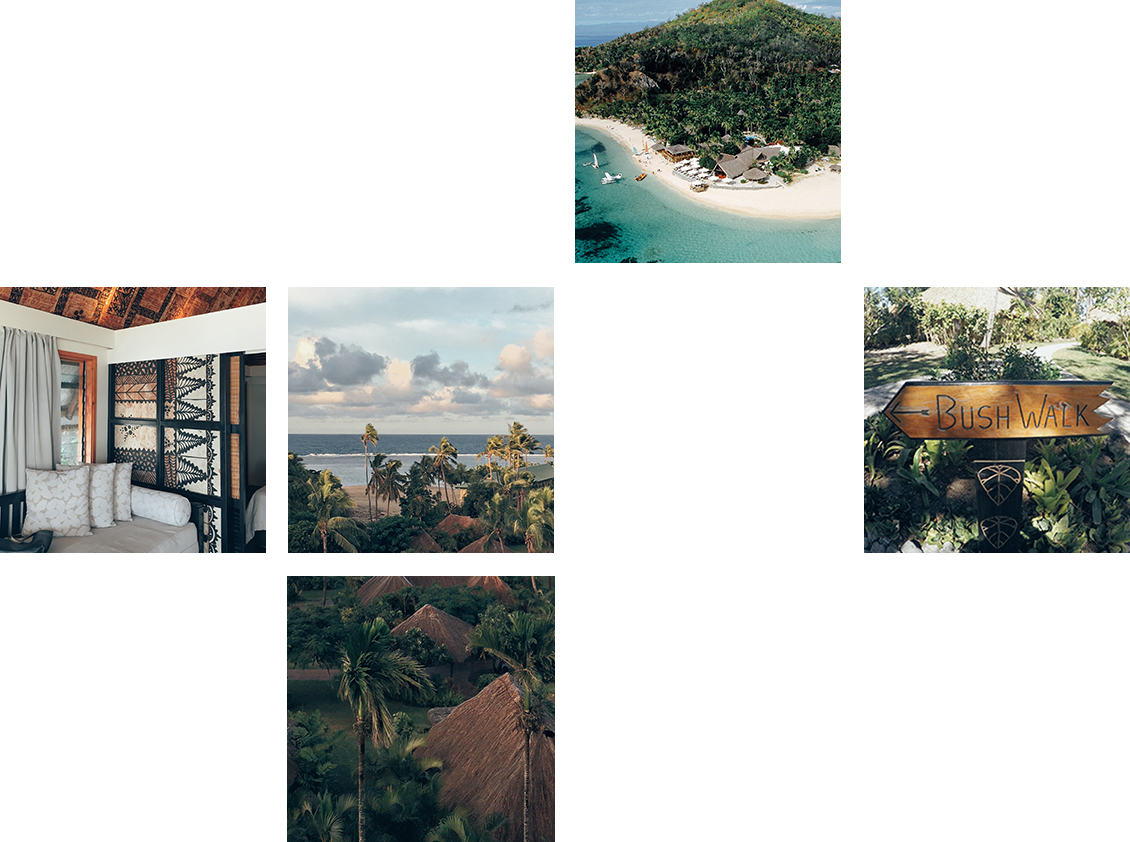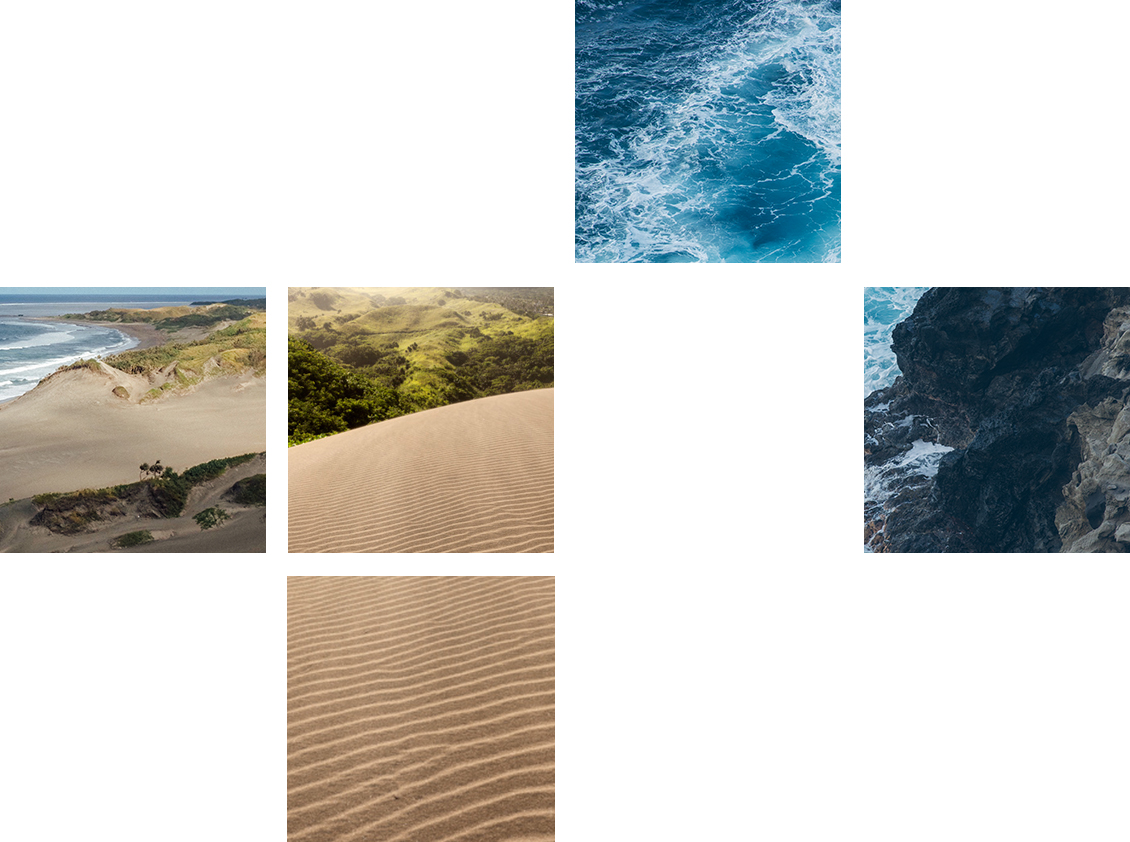The Flip Side of Fiji | Outrigger Hotels and Resorts
We’re travelling 26.5 kilometres due west from Port Denarau on Viti Levu, the largest of the Fijian Islands, towards the Mamanuca Islands archipelago. The captain of the speedboat we’re on points to our final destination, Castaway Island(“Qalito” to locals), which is, from afar, a speck in the middle of the South Pacific Ocean.
Nearing the island as the sun sets, tropical rainforest surrounded by untouched coral reef comes into view. The sky turns from vibrant coral to burnt orange, and the boat engine quiets to a hum. We dock as the private resort’s smiling staff’s harmonized voices and strumming guitars fill the air to welcome us ‘home’ with a resounding “Bula!” (pronounced boo-lah, a traditional Fijian welcome meaning ‘life’). We’re the first guests to visit the island since it was devastated by Cyclone Winston in February 2016, the most violent tropical storm to make landfall in Fiji’s recorded history.
Fiji isn’t foreign to violence. Just over a century ago, it was known as an unforgiving nation where cannibalism was a symbol of dignity and pride conducted for many reasons, from celebrating a victory against a rival tribe or as part of the grieving process of members of a tribe. The fighting claimed its last victim, an English missionary, in 1867. Today, sun-seekers fly to the South Pacific island chain to flop on its secluded beaches. Others, though, are learning this is a destination for active adventures—the islands are alive with untouched jungle, rugged coastline, pristine reef, and small villages with a rich culture and history to be explored. Our adventure started on Castaway Island, a private resort owned by the Outrigger Hotel Group.
RUN THE BUSH TRAIL ON CASTAWAY ISLAND
There isn’t a gym in sight on Castaway, just like there are no phones or televisions in the bures (traditional Fijian bungalows) and wifi is limited to the resort’s open-air Sundowner Bar. Think of it as a welcome digital detox and take to mother nature to break a sweat. Ask the front desk for directions, sign-in (safety first!), then head to the trailhead of the bush walk and run or hike the hour-long route, which is marked with small, hand-painted wooden signs that lead to the highest point on the island. On a clear day, gaze across the ocean to the volcanic Yasawa Islands.
Need to know: Hit the trail just before sunrise and watch the sun illuminate not-so-distant islands. Mind the cobwebs, and assume you’ll meet a few locals: some very large, non-poisonous spiders and a family of goats who’ve clearly marked the territory with the strong smell of their milk.
What to wear: Going barefoot around the resort is encouraged—and fits in with the laidback vibe of the resident staff, some of the most relaxed and friendly people in the South Pacific. But while the trail is well-maintained, you’ll be navigating fallen branches and loose stones so running shoes are required. Also bring a water bottle, and throw on gear for a warm-weather trail run (Fiji has an average temperature of 25°C).
How to get there: The only way to get to Castaway Island is by float plane, speedboat (we travelled from Denerau Marina with South Sea Cruises and yes, you can grab a bevvie on board) or catamaran.
DIVE WITH SHARKS AND SWIM WITH DOLPHINS AT CASTAWAY ISLAND
We’re not talking about diving within a reinforced steel cage into a shiver of bull sharks and then dangling a bag of bloody meat to draw them near for a closer look (although, if that’s your thing, there’s a dive site for that nearby called The Supermarket). Steps from Castaway Island’s beachfront bures, the ocean teems with life as tiny stingrays nestle into the sand and bright blue linckia starfish cling to the shallowest parts of the reef.
The island’s dive team of five staff members have a combined 100-plus years of experience in the surrounding waters and include a native spear fisherman from nearby Tavua Island, and instructors who live off the water and its bounty. The reef around Castaway Island is protected by a tabu (pronounced tam-bu), a traditional ban on fishing made in agreement with the chief of the neighbouring islands.
We speed out towards the middle of the ocean to a part of the reef marked with a buoy, and hop in the water. We swim alongside a school of rainbow-coloured wrasse, a moray eel, rare giant sea bass, urchins, and a giant clam (like the one we relocated on World Ocean’s Day as part of the Outrigger’s OZONE program), all ambling about hard and soft coral. Back on the boat returning to Castaway Island, a pod of spinner dolphins appears in the water. The captain revs the Yamaha 200 four-stroke engine and drives the boat in circles, letting the pod play in the wake.
What to Wear: Dive shops recommend a 3mm wetsuit in the summer and 5mm wetsuit in the winter. What’s worn underneath is up to you. We recommend a comfortable swimsuit so it’s easy to peel back the wetsuit to get some vitamin D on the boat. Both Outrigger resorts in Fiji offer complimentary pool training sessions and a variety of dives and PADI courses.
TACKLE THE SIGATOKA SAND DUNES
They don’t call the Sigatoka Sand Dunes the Flying Fijian’s (Fiji’s national rugby team) secret weapon without warrant—the large size of our guide and naturalist Ivereimi Rogoria’s calves proves that. Back on Viti Levu at the mouth of the Sigatoka River, rippled dunes have been forming for millions of years with sand and sediment from the river. The dunes are made up of two systems, stable and unstable (the latter is where the Flying Fijians train).
There are two trails, the 1.5km Yatolekaleka (translation: short walk) and the 4.5km Yatobalavu (translation: long walk). We opt for Yatobalavu, and hike through the dunes for two hours, past a mahogany forest, onto the beach and along the coastline, which is pounded by waves—a surfer’s paradise, to the untrained eye, and yet there isn’t a soul in sight. “It’s rife with bull sharks who feed at the mouth of the river,” explains Rogoria of the desolation.
Need To Know: If you stumble upon human bones or salt drying trays (remnants of the area’s history of solar salt production), it’s bad luck to take them from this 2500-year-old archeological site, the oldest burial site in the South Pacific. How will you know if the bones are human? Rogoria explains the tongue test; the porous nature of some fossil bones will cause them to slightly stick to your tongue when you lick them. “Here’s a human one, want to check?” he asks, passing over a small piece of skull.
What to Wear: The trail has a variety of terrain, including tall grass and dry sand. Choose a pair of closed toe shoes—trainers will do the trick. It can get breezy at the top of the dunes, and the sun can be strong, so pack a light layer.
JET BOAT UP THE SIGATOKA RIVER
“Do you want to get wet?” our guide asks. Before we can answer, the jet boat has zoomed 100 metres from where we got in, and we’re whipped from side to side, velocity flattening our cheeks, tears of laughter pouring from our eyes and water splashing our faces as we speed up the Nadi River Inlet.
The Sigatoka River curves through the Sigatoka Valley, known to locals as Fiji’s Salad Bowl. We pass rolling green hills, local fishermen pulling in their daily catch, women bathing and children riding horses through the water. The lush valley is dotted with villages, farms and markets. Food is cooked over open fires and on school days children in colourful bathing suits swim across the river to be educated, their school uniforms safe in buckets lifted above them on long poles. It’s here we discover the less-developed Fiji.
Twenty kilometres up the river in the village of Vunaquoru we have our most memorable meal in Fiji. Boiled tapioca, curried chicken, and the juiciest pineapple and watermelon prepared in the outdoor kitchen, served on a tablecloth carefully placed on the hand-woven bamboo floor of Vunaqoru’s community hall. Organic? Check. Local? Check. Cooked without electricity or fancy utensils? Check.
Sitting cross-legged, we eat with our hands as the villagers watch with pride and strum guitars. Curious children watch our every move, wait for us to finish eating, then join us in a dance party that consists of a singular move; two steps forward and two steps back, keeping an arm around a partner (who switches every minute or so).
Need To Know: Australian expat Jay Whyte turned a childhood dream of owing a jet boating business into a cultural experience with Sigatoka River Safari, giving adventurers unprecedented access to remote villages. Weekly trips to a rotating cast of 12 communities gives each a chance to share their culture with visitors without disrupting daily life too much.
What To Wear: Visitors require a traditional sulu (a Fijian sarong, provided) to cover up upon arrival to the village, but for the boat ride wear something that’s quick-dry and water resistant.
RUN THE CORAL COAST
Fiji’s Coral Coast is an 80km stretch of sandy beach that runs between Viti Levu’s two major cities, Nadi and Suva, with a contrasting mix of resorts and rural villages. Take a right on the beach outside the Outrigger Fiji Beach Resort and run this scenic slice adjacent to Queen’s Road towards the village of Vatukarasa. Stop and check out the vibrant coral reef and tide pools along the way, and cool off at the end of your run with a swim.
Need to know: Hit the sand first thing in the morning, when heat and humidity are lowest. While it might be tempting to pick up seashells or coral along the way, it’s illegal to take anything from the sea (or made from wood) home with you unless it’s certified ‘treated.’
What to Wear: The sun in the South Pacific is strong with an average UV index of 12 (six to seven means high risk of harm from unprotected sun exposure). Wear a hat and slather on sunblock, or wear a sweat-wicking fabric with UPF.
I was a guest of Castaway Island and Outrigger Fiji Beach hotels and flew non-stop LA to Nadi on Fiji Airways.
Originally published here at lululemon.











